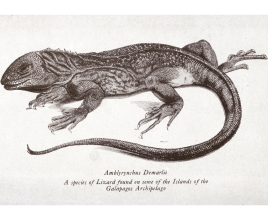Voyage of the Beagle
- ... Charles Darwin was born on February 12th, 1809 in Shropshirey in England at almost exactly the same time as Abraham Lincoln, future president of the United States of America, was born in Kentucky?
- ... Darwin's position on the ship H.M.S. Beagle was unpaid, and only after his scientific successes was Darwin financially rewarded?
- ... the expedition was planned initially for two years because nobody originally intended to circumnavigate the globe?
- ... the expedition accumulated an unusually rich supply of scientific specimens, upon which Darwin based his theory on the origin of species, natural selection and biological evolution, which together became collectively known as "Darwinism"?
- ..., at the request of his colleagues and to honor his achievements, the president of the Royal Society arranged a state funeral for Darwin, and his remains are entombed in Westminster Abbey, near the graves of William Herschel and Isaac Newton?
- The expedition left Plymouth on December 27th, 1831 and returned October 2nd, 1836.
- The expedition's ship was the H.M.S Beagle, formerly a gunship of the Royal Navy, 30 meters long.
- The ship's captain was Robert Fitzroy, a pioneering meteorologist.
- The ship was named after a breed of dog – the beagle.
- The expedition took five years and brought about dramatic changes in many fields of science.
- Darwin died on April 19th, 1882, according to some sources, as the result of an illness contracted from an insect bite he received whilst in Brazil.
Charles Darwin was recommended by the botanist John Stevens Henslow as a scientist for the expedition of the H.M.S. Beagle. The expedition was tasked with mapping ocean currents and the shore of South America, particularly Patagonia, Tierra del Fuego and the Chilean and Galapagos islands. Darwin made the most of the opportunity. The Beagle departed from the English port of Plymouth on December 27th, 1831. It arrived in Brazil January 29th, 1932 and with frequent stops, made its way south along the coast. In October of 1833 in Argentina, Darwin came down with a fever and in July of 1834, he became ill during the journey from the Andes to Valparaiso. In the meantime, the Beagle sailed to the Galapagos Islands, over 1,000 kilometers distant from the South American shore, by which time Darwin was well again. The stop at Galapagos lasted five weeks and was the peak of Darwin's scientific journey around South America. He discovered traces of geological changes in the history of the Earth. During the first three years of the journey he became convinced that species are not static, but change during the course of time. The first significant support for this theory came from the examination of fossils, which proved that some species had died out. On each island he found species that were similar, but still distinct. In the Pacific Ocean Darwin conducted intensive biological investigations on Tuamotu, Tahiti a New Zealand, where he looked into the formation of coral reefs and wrote a scientific description of them. After traversing the South American coast, New Zealand, Sydney and Cape Town, that is, after circumnavigating the globe, the Beagle and its crew returned to Plymouth on October 2nd, 1836.


